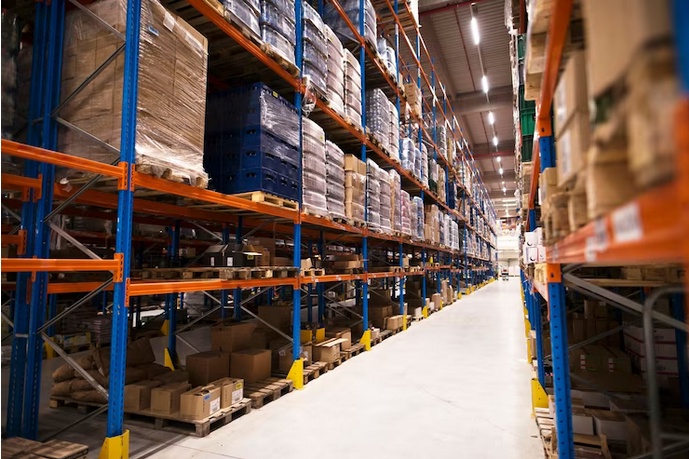Introduction
In the fast-paced world of modern logistics and supply chain management, warehouse efficiency plays a crucial role in ensuring timely and cost-effective delivery of goods. A pivotal aspect of warehouse efficiency is the optimization of storage space through effective warehouse racking systems. These systems are designed to maximize the utilization of available space while ensuring easy access to inventory, ultimately leading to improved inventory management, reduced operational costs, and enhanced overall productivity.
Understanding Warehouse Racking Systems
Warehouse racking systems are specialized frameworks designed to organize and store goods within a warehouse or distribution center. They provide a structured layout that efficiently utilizes both horizontal and vertical space, enabling businesses to store a larger volume of goods in a limited area. These systems vary in design, structure, and capacity, offering solutions tailored to the specific needs of the business.
Types of Warehouse Racking Systems
-
Selective Racking: This is the most common type of racking system where pallets are placed directly on horizontal beams. It offers easy access to individual pallets and is suitable for businesses with diverse product lines but limited SKUs (stock keeping units).
-
Drive-In Racking: Ideal for goods with a large number of pallets per SKU, this system enables forklifts to drive into the rack, eliminating the need for multiple aisles. While it maximizes storage space, it reduces selectivity.
-
Cantilever Racking: This system is designed for the storage of long and bulky items such as pipes, lumber, and furniture. It features arms extending from vertical columns, allowing easy loading and unloading.
-
Pallet Flow Racking: Employing a gravity-fed design, this system is suitable for high-density storage of perishable goods. Pallets are loaded from one end and flow to the other for efficient retrieval.
-
Push-Back Racking: Operating on a Last-In, First-Out (LIFO) basis, this system uses carts on inclined rails to push previous pallets back as new ones are loaded, maximizing storage and minimizing the need for multiple aisles.
Benefits of Efficient Warehouse Racking
-
Space Utilization: Efficient racking systems make the most of available space, helping businesses avoid the costs associated with expanding warehouse facilities.
-
Inventory Management: By providing clear organization and accessibility, racking systems reduce the chances of errors during order fulfillment and inventory counts.
-
Operational Efficiency: Well-designed racking systems enable smoother movement of goods, reducing the time taken to retrieve items. This leads to enhanced order processing and faster delivery times.
-
Safety: Racking systems designed with safety in mind prevent accidents such as collapsed stacks, which can lead to injuries and damage to goods.
-
Cost Savings: Optimized space utilization and improved inventory management directly contribute to cost savings, making efficient racking systems a sound investment.
-
Scalability: As businesses grow, their storage needs evolve. Flexible racking systems can be adjusted and expanded to accommodate changing inventory requirements.
Factors to Consider in Warehouse Racking System Selection
-
Inventory Characteristics: The type, size, and weight of items being stored influence the choice of racking system. Bulky items require different racking solutions than small, fragile ones.
-
Storage Density: Businesses with high inventory turnover may opt for systems that prioritize accessibility, while those with slower turnover may benefit from high-density solutions.
-
Warehouse Layout: The physical layout of the warehouse, including ceiling height and available floor space, dictates the suitability of various racking options.
-
Order Picking Method: The frequency and method of order picking (e.g., individual items vs. entire pallets) impact the selection of racking systems. Some systems facilitate selective picking, while others are designed for bulk retrieval.
-
Budget: The cost of implementing a racking system, including installation and potential modifications, must align with the available budget.
Implementing an Efficient Warehouse Racking System
-
Assessment: Begin by thoroughly assessing your inventory, warehouse layout, and operational needs. Identify the types of items you store, the volume of inventory, and the required storage density.
-
Racking Design: Based on the assessment, choose a racking system that aligns with your requirements. Consider a combination of racking types if your inventory varies widely.
-
Professional Installation: Racking systems must be installed correctly to ensure stability and safety. Professional installation services can guarantee proper setup.
-
Employee Training: Train warehouse staff in the proper use of the racking system, focusing on loading, unloading, and safety procedures. Regular refresher training is advisable.
-
Regular Maintenance: Establish a maintenance schedule to inspect and repair racking systems. Damaged or weakened components should be replaced promptly to prevent accidents.
Conclusion
In the dynamic landscape of modern supply chain management, efficient warehouse operations are paramount to success. Warehouse racking systems provide a strategic solution to the challenges of space optimization, inventory management, and operational efficiency. By carefully assessing inventory characteristics, warehouse layout, and operational needs, businesses can select the right racking system to suit their requirements. Investing in a well-designed racking system not only maximizes space but also enhances overall productivity, reduces costs, and contributes to a safer working environment. As businesses continue to evolve, the implementation of an efficient warehouse racking system remains a cornerstone of success in the realm of logistics and distribution.


No comments yet